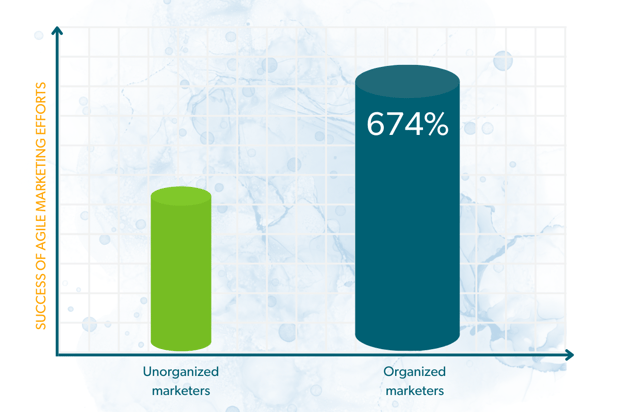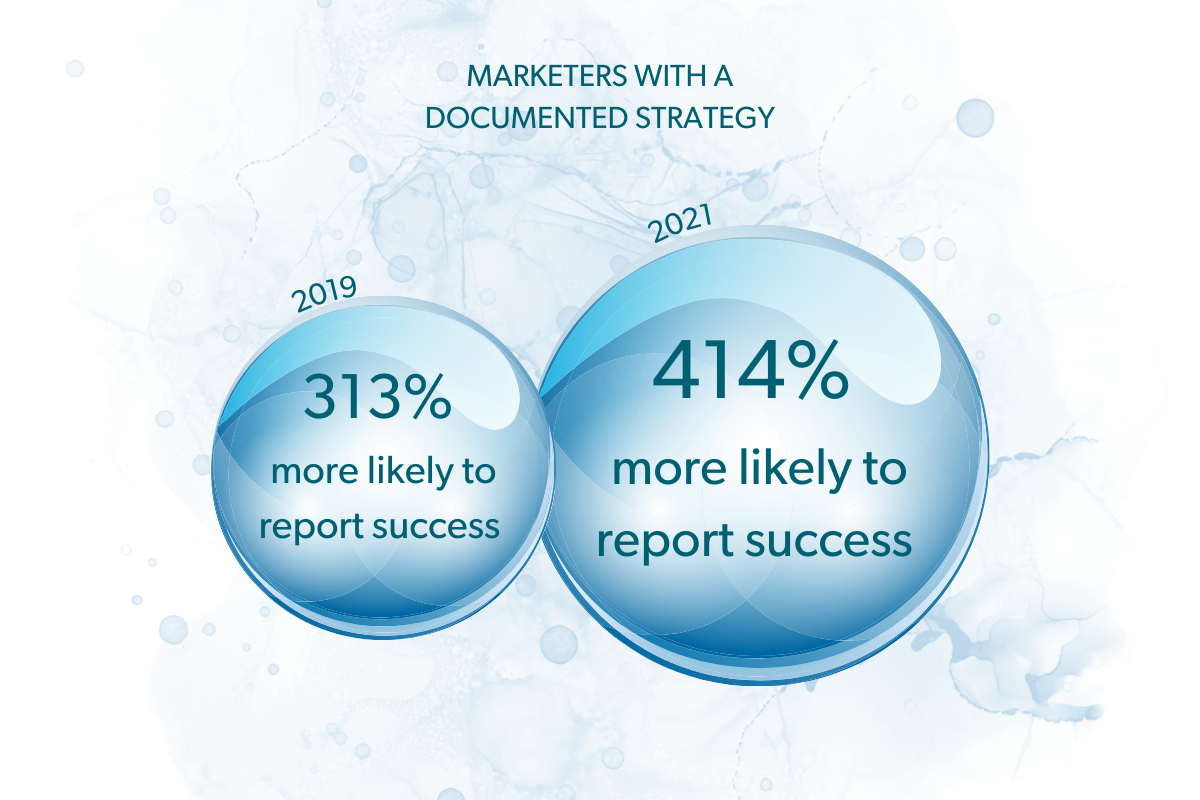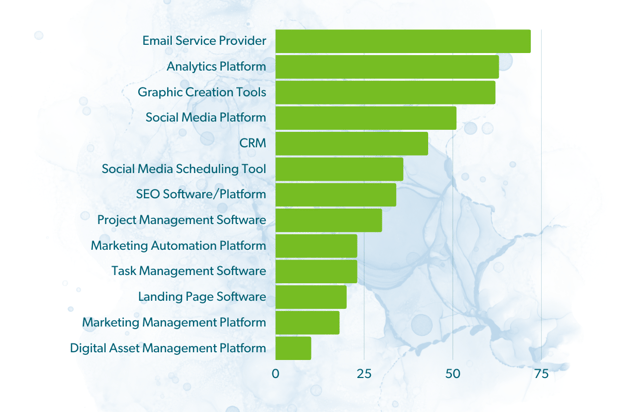Improve your Marketing Ops every week
Subscribe to our blog to get insights sent directly to your inbox.
Confront your process problems head on with a Sherpa by your side.
Explore support options that are tailored to meet you wherever you are on your climb.
Learn from the stories of marketers already on the road to process improvement.
Featured Resource

State of Agile Marketing
Learn from 8 years of study on how marketers are increasing their agility.
Download Report
According to the 2024 State of Agile Marketing Report, 40% of non-Agile marketing departments plan to implement Agile frameworks within the year.
Based on the findings from this report, it’s no surprise more and more marketing teams are turning to Agile marketing to improve their processes and productivity. To be successful and resilient in marketing, you need a team that is performing at the top of their game and Agile provides a serious edge.
Back in 2022, the team at CoSchedule launched a report on trends in marketing for the year that hold true even a couple of years later, and their top findings tell the same story. Agile marketing is key to successful marketing.
Here are the key findings and tips on how you can improve team performance by going Agile.
Want to be more effective? Agile methods are designed to help marketing teams handle the challenges that inevitably arise.

Digital marketing is fast-paced. Even without a curveball like the Coronavirus pandemic, it can be tough to execute marketing alongside endless incoming requests, unexpected industry changes, and other disruptions.
Agile teams can take on challenges and opportunities without slowing down - all while staying focused on business objectives. It's no wonder our study found they are 469% more likely to report success than their peers.
How can your team adopt the right Agile marketing framework, so you can pivot your strategy in real-time?
25% of marketing teams find that adopting a hybrid or “Scrumban” framework is the easiest place to start.

This is good news!
It means that you don’t have to go all-in on any particular method for applying Agile to reap the benefits. A hybrid framework gives you the opportunity to take practices from both Kanban and Scrum in order to achieve agility in a way that works best for your particular context.
Scrumban, a popular hybrid method, is more than just two names mashed together. They combine the systems with the context and the capabilities with the perspectives.
In other words, Scrum covers meetings and roles while Kanban takes care of individual tasks.
Scrumban has the ability to join the two schemes into something that can work for everyone. It’s the best of both worlds that are worth trying.
Marketing is like a giant car with a thousand engine lights blinking at the same time. It’s hard to know where to start and how to get to the finish line smoothly.
According to our data, the solution is being organized. Organized marketers are 6x more likely to report success than their peers!

Here’s why:
When your team is organized, you can see what needs to get done by whom and plan accordingly. This way, you don’t waste time on tasks that aren’t important.
Yes, that includes time spent digging through emails for the latest round of feedback from your boss.
Still, wanting to get organized and making it happen are two very different things, so where should you start?
Does this sound interesting? Maybe a bit overwhelming? Grab our Agile Marketing Quick Start Guide to master the basics.
You know that you need to document your strategy.
I know that you need to document your strategy.
Your friend from college’s web design & marketing team knows that they need to document their strategy.
But it’s easier said than done.
As many as 14% of marketers have 0 documentation and almost 50% have entire portions of their strategy undocumented.
That’s a huge miss because marketers with a documented strategy are 414% more likely to report success.

As a fellow marketer, I get it. Documenting strategy can take up a lot of time.
It’s a tall order when you still need to be on point with your marketing drip emails, online events, and daily tweets. The show must go on.
It’s hard, but the 7th Annual State of Agile Marketing report shows that not having a strategy does more damage than you think.

Let’s review some examples from its findings.
If leadership does not understand what you’re working on, your projects, and even worse, your job may be in jeopardy.
If the team doesn’t have a good sense of what others are working on, there will be a lot of miscommunication, misaligned brand messaging, and general mayhem.
If you don’t establish a strong working methodology, such as Agile, and remain an ad-hoc marketer, you can expect to bear even more of the brunt and eventually burn out.
In summary, a Kanban a day will keep the (marketing) mayhem away.
One of the simplest ways you can start documenting your strategy is to map out your work with Kanban using this Beginner’s Guide to Kanban.
Planning is great. Proactive planning is better.
Being proactive means that you’re always thinking ahead. You have a plan for different scenarios in your marketing strategy. For example, if you're a marketer for a business with a “busy” season, you can pre-plan social messages to promote your products & services before it hits to generate interest.
Proactive planners are three times more likely to report success than those who don’t plan at all.
It also gives your team time to look ahead to plan tasks, campaigns, and projects in advance while giving them flexibility when other work takes priority.
Once you adopt Agile marketing, planning will become easier. Most teams move annual planning to a quarterly occurrence, enabling more frequent improvements based on feedback.
So, where does one start with proactive planning? It can very easily be built into your regular planning.
You can start by creating a backlog of things you want to do or cover, then incorporate them into your sprints as needed.
Take a look at our Marketing Backlog Guide to learn more.
62% of marketers surveyed do not use any kind of project management software to manage their marketing.
Where do they keep a record of their tasks? Excel? A paper notepad? A spreadsheet? It's likely a combination of these.
Whichever it is, they should take note of the fact that project management software users are 426% more likely to report success!

Project management software can assist teams with managing team goals, and long-term projects, as well as coordinating individual tasks.
It can be your accountability/productivity buddy.
According to the Agile Marketing report, 84% of users found implementing an Agile project management tool valuable, however, only 41% actually used one.
It’s a huge missed opportunity.
Project management platforms can help organize, visualize, and interpret your tasks and projects in one place. They're also excellent help in keeping your team on track - particularly if they are working remotely.
While getting started on the path towards agility can sometimes feel overwhelming, it proves itself time and time again as one of the top indicators of a top-performing team.
It's worth starting by working with seasoned experts with years of experience helping teams like yours make the transition to Agile marketing. We have a variety of Agile marketing training courses to get you started.
Whitney is a Product Marketing Strategy Lead at CoSchedule. With over 10+ years of experience in marketing roles, she enjoys helping other marketers transform the way they work using CoSchedule products. In her spare time, she loves traveling with her family, coaching figure skating, & reading.
Subscribe to our blog to get insights sent directly to your inbox.
Subscribe to our blog to get insights sent directly to your inbox.